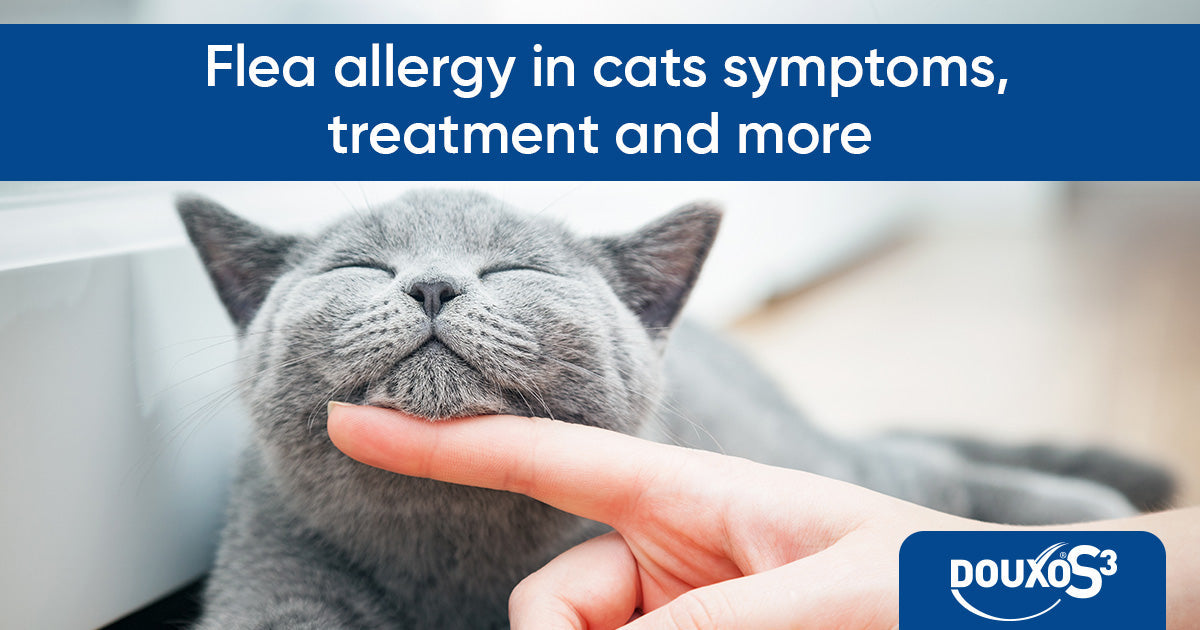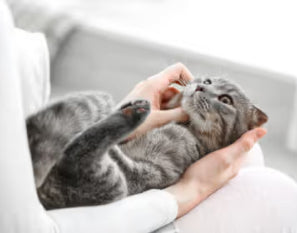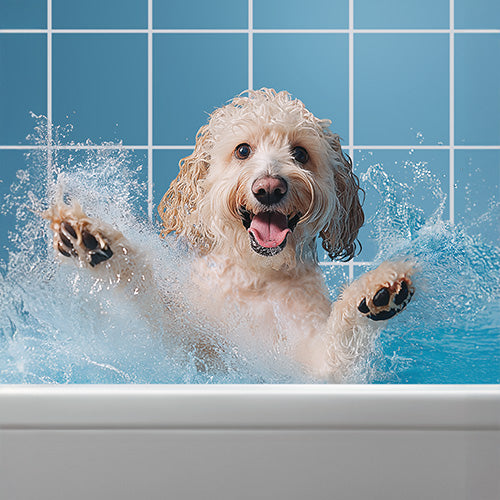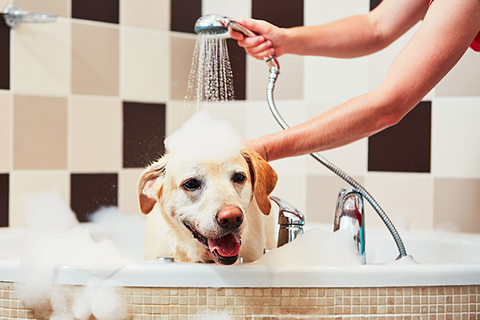
Flea allergy in cats: symptoms, treatment and more
Fleas! A cat owner’s nightmare. Fleas are irritating little creatures: their bites are itchy, they are difficult to eradicate, and they multiply quickly. Some cats have even more reason to hate fleas – a staggering 1 in 12 cats show signs of a flea allergy , known as flea allergic dermatitis (FAD). For cats with FAD, even one flea bite can cause an allergic reaction, leading to itchy, sore and painful skin. So how do you know if your cat has a flea allergy, and what can you do about it?
Cats and fleas: what's the big problem?
The most common flea species to be found on cats (and dogs!) is the aptly named ‘cat flea’, or Ctenocephalides felis. The adult fleas usually live on your pets and can live up to two years. However, the fleas that you can see are only a small part of the story. If there are adult fleas living on your cat, even just one or two, there will be hundreds (even thousands!) of eggs and larvae living in your home: your carpet, your soft furnishings and even your bed.
One single adult female flea can lay up to 2000 eggs in a lifetime, with the full life cycle completing in as little as a fortnight, meaning a small flea problem can very quickly turn into a full-scale infestation. Flea eggs need warmth to hatch, but it is a common myth that they are only present in the warmer summer months. This is no longer the case, as due to our efficient central heating systems, our homes are at a perfect temperature for fleas to multiply all year round.
And the worst part is cats with flea allergy will react badly to even one bite, as the flea saliva injected into the skin when the flea bites triggers an overactive immune response. So, what can you expect in an allergic cat?
What does flea allergy look like?
All cats may have the odd scratch here and there, and will likely spend time grooming themselves regularly. But there are some signs that your cat may be having an allergic response to fleas, with allergies in cats usually manifesting as skin problems. The resulting skin condition is often referred to as flea allergic dermatitis.
Here are some common symptoms:
- Scabs and lumps in the skin (miliary dermatitis)
- Excessive licking or scratching
- Red, sore areas of skin, bumps
- Hair loss (alopecia)
- Skin infections secondary to excessive scratching or licking
Areas most commonly involved in FAD are over the rump, at the base of the tail, inner legs, neck, face and even lips. For more details on manifestations of allergies, don’t hesitate to read our dedicated article.
An important point to note is that you might not actually be able to see any fleas! Cats with FAD only need one bite to react badly. Also, cats eat adult fleas as they groom themselves, which can make them difficult to spot. You may see ‘flea dirt’ as small black specks on your cat’s skin. If you rub some of these onto damp cotton wool, the dirt (actually flea excrement) will disintegrate and turn a red/brown colour due to the blood the flea has digested. But your cat may be suffering from FAD even if you never see any evidence of the tiny critters.
What is the treatment for flea allergy?
If your cat has sore, itchy skin, seek advice from your veterinary surgeon. They will take a history from you all about your cat and its environment, examine your cat and may run some tests.
If your cat has FAD, there are two main considerations: firstly to treat the skin disease caused by the allergy, and secondly to manage the allergy ongoing by maintaining excellent flea control.
Alleviate the skin signs
The symptoms of allergies in cats are distressing and uncomfortable: excessive itchiness leads to self-trauma of the skin, which leads to wounds, sore patches, hair loss and infections. Depending on how badly your cat is affected, there are a few treatment options.
- Medications, relieve the itchiness quickly and discomfort. These may be given by tablet, injection, oral liquid or even a spray to apply to the skin.
- Topical products – shampoos, mousses and pads can be very effective as they can be applied directly to where the body most needs them. Shampoos clean the skin, removing allergens such as fleas, cleaning away crusty sore areas of skin and help subdue infections. Mousses allow a prolonged contact with the ingredient for a longer efficacy. If the affected areas are small, you can use targeted solutions such as pads. Products such as the DOUXO® S3 CALM line deliver soothing ingredients such as Ophytrium directly to sore, inflamed areas of skin, leading to quick relief and helping repair the damaged skin.
Control the fleas
Once your cat has fleas, your house will do too! Good flea control relies on both animals and home being treated, so that the cycle is stopped rather than continuing on and on. There are a large range of flea products available – tablets, spot-ons etc, and it is worth speaking to your veterinary surgeon about what they would recommend for your cat. Cats with FAD need highly effective flea control, so it is worth spending some time to find the best option. It is also recommended to treat any other pets in the household, even if they seem unaffected, as they can become carriers of adult fleas.
Treating the house will eradicate the eggs and larvae, although repeated applications may be necessary to catch all stages of the life cycle. This will usually involve sprays, but also washing your cat’s bedding at 60 degrees Celsius, and regularly vacuuming to reduce the numbers of eggs and force tough pupae to hatch out into vulnerable adults that the sprays will be effective against. In very severe infestations, a pet controller and steam cleaning may be needed too, so it’s best not to let it get that far!
Key points about cat flea allergies
- Flea allergies in cats are very common.
- Cats with FAD can have severe skin symptoms, with only one bite being needed to cause problems.
- Fleas are hard to eradicate and can live and multiply in our homes all year round.
- Prevention is key, and effective flea control is of top importance in these cases.
- Cats suffering from sore, itchy skin as a result of FAD can be treated with medications and with topical treatments such as shampoos and mousses.
We recommend DOUXO® S3 CALM
















